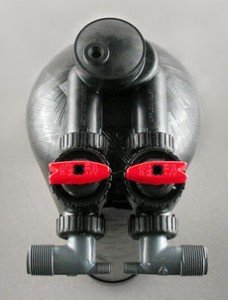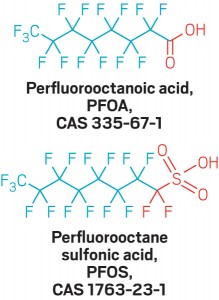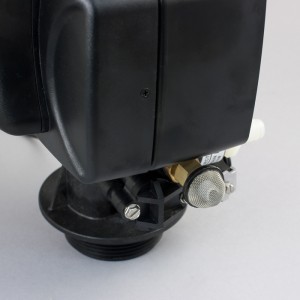Clean Water Act dramatically cut pollution in U.S. waterways
by Kara Manke
The 1972 Clean Water Act has driven significant improvements in U.S. water quality, according to the first comprehensive study of water pollution over the past several decades, by researchers at UC Berkeley and Iowa State University.
The team analyzed data from 50 million water quality measurements collected at 240,000 monitoring sites throughout the U.S. between 1962 and 2001. Most of 25 water pollution measures showed improvement, including an increase in dissolved oxygen concentrations and a decrease in fecal coliform bacteria. The share of rivers safe for fishing increased by 12 percent between 1972 and 2001.
Despite clear improvements in water quality, almost all of 20 recent economic analyses estimate that the costs of the Clean Water Act consistently outweigh the benefits, the team found in work also coauthored with researchers from Cornell University. These numbers are at odds with other environmental regulations like the Clean Air Act, which show much higher benefits compared to costs.
“Water pollution has declined dramatically, and the Clean Water Act contributed substantially to these declines,” said Joseph Shapiro, an associate professor of agricultural and resource economics in the College of Natural Resources at UC Berkeley. “So we were shocked to find that the measured benefit numbers were so low compared to the costs.”
The researchers propose that these studies may be discounting certain benefits, including improvements to public health or a reduction in industrial chemicals not included in current water quality testing.
The analyses appear in a pair of studies published in the Quarterly Journal of Economics and the Proceedings of the National Academy of Sciences.
Cleaning up our streams and rivers
Americans are worried about clean water. In Gallup polls, water pollution is consistently ranked as Americans’ top environmental concern – higher than air pollution and climate change.
Since its inception, the Clean Water Act has imposed environmental regulations on individuals and industries that dump waste into waterways, and has led to $650 billion in expenditure due to grants the federal government provided municipalities to build sewage treatment plants or improve upon existing facilities.
However, comprehensive analyses of water quality have been hindered by the sheer diversity of data sources, with many measurements coming from local agencies rather than national organizations.
To perform their analysis, Shapiro and David Keiser, an assistant professor of economics at Iowa State University, had to compile data from three national water quality data repositories. They also tracked down the date and location of each municipal grant, an undertaking that required three Freedom of Information Act requests.
“Air pollution and greenhouse gas measurements are typically automated and standard, while water pollution is more often a person going out in a boat and dipping something in the water.” Shapiro said. “It was an incredibly data and time-intensive project to get all of these water pollution measures together and then analyze them in a way that was comparable over time and space.”
In addition to the overall decrease in water pollution, the team found that water quality downstream of sewage treatment plants improved significantly after municipalities received grants to improve wastewater treatment. They also calculated that it costs approximately $1.5 million to make one mile of river fishable for one year.
Comparing costs and benefits
Adding up all the costs and benefits — both monetary and non-monetary — of a policy is one way to value its effectiveness. The costs of an environmental policy like the Clean Water Act can include direct expenditures, such as the $650 billion in spending due to grants to municipalities, and indirect investments, such as the costs to companies to improve wastewater treatment. Benefits can include increases in waterfront housing prices or decreases in the travel to find a good fishing or swimming spot.
The researchers conducted their own cost-benefit analysis of the Clean Water Act municipal grants, and combined it with 19 other recent analyses carried out by hydrologists and the EPA. They found that, on average, the measured economic benefits of the legislation were less than half of the total costs. However, these numbers might not paint the whole picture, Shapiro said.
“Many of these studies count little or no benefit of cleaning up rivers, lakes, and streams for human health because they assume that if we drink the water, it goes through a separate purification process, and no matter how dirty the water in the river is, it’s not going to affect people’s health,” Shapiro said. “The recent controversy in Flint, MI, recently seems contrary to that view.”
“Similarly, drinking water treatment plants test for a few hundred different chemicals and U.S. industry produces closer to 70,000, and so it is possible there are chemicals that existing studies don’t measure that have important consequences for well-being,” Shapiro said.
Even if the costs outweigh the benefits, Shapiro stresses that Americans should not have to compromise their passion for clean water — or give up on the Clean Water Act.
“There are many ways to improve water quality, and it is quite plausible that some of them are excellent investments, and some of them are not great investments,” Shapiro said. “So it is plausible both that it is important and valuable to improve water quality, and that some investments that the U.S. has made in recent years don’t pass a benefit-cost test.”
Source: Berkeley News
Pure Water Gazette Fair Use Statement







